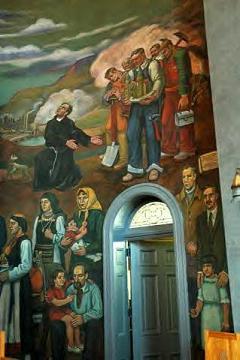| | Maxo Vanka (Zagreb 1889 - Mexico 1963) created spectacular murals in the Croatian Catholic church of St. Nicholas in Pittsburgh, USA, in 1937. On each side of the altar are Croatian people, on the left from the Old World, and on the right from the New. Shooting of a feature film about Maxo Vanka is planned by Mladen Juran, Zagreb. |

| Croatian painter and muralist Maximilian (Maxo) Vanka (Zagreb 1889 - Mexico 1963) completed his studies at the Academy of Fine Arts in Zagreb, where later he became professor of painting. He also studied at the Brussels Academy of Fine Arts, Brussels, Belgium. As a young student he exhibited at an international show in the Belgian capital and in 1914 won the gold medal of King Albert at this event, for his Bistricki proštenjari (Marija Bistrica fairgoers) with beautiful Croatian folklore motives. He made a nice portrait of Croatian female composer Dora Pejacevic (1885-1923):  |
| Vanka exhibited throughout Europe, and obtained many honours, among them Palme Academique of the French Legion of Honor. Having moved to the USA in 1934, he became noted for his beautiful church murals, for example in St. Nicholas Croatian Church, Pennsylvania. Some american specialists consider these murals the best church frescos in the USA. He depicts not only traditional Catholic scenes and symbols, but also the lives and spirituality of the Croatian immigrant community. Vanka founded the art department at Delaware Valley College of Science and Agriculture in New Britain, Pennsylvania. After his tragic death (drowned in the Pacific) a bird sanctuary was established in his honor at the Washington Crossing Nature Education Center. |
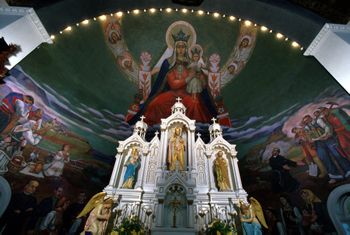

Details from Croatian Catholic church of St. Nicholas, Pittsburgh, USA
| According to Croatian art historian Nikola Vizner, most of his works are in possession of his family in Bucks County, Pennsylvania; the Michener Museum in Doylestown, PA has a formidable collection of his works; there is a large collection of his work in Modern Gallery, Zagreb, Croatia, as well as in the Memorial Museum Maximilian Vanka in the town of Korcula (on the beautiful island bearing the same name), Croatia. Here is Vanka's philosophy of painting:
His main interests were in folklore and social motives, human destiny in general. One of his deeply moving masterpieces is Lepers, a result of his short stay in India. |

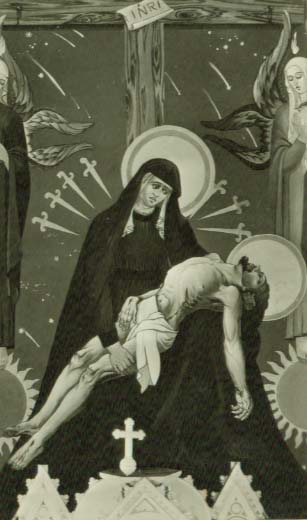
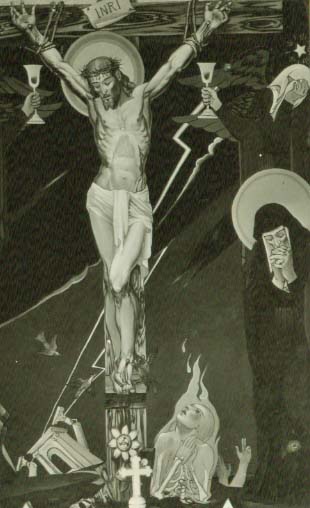
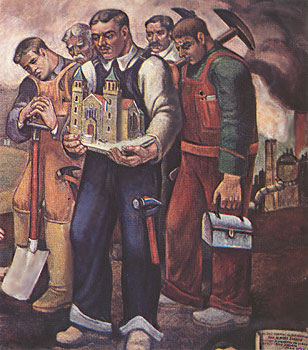
| From Pittsburgh History (an excerpt): In Millvale, at St. Nicholas Croatian Catholic Church, one very unusual wall mural blends religious and political themes to express a strong personal message from its artist, Maxo Vanka, a Croatian artist who fled to the U.S. in the mid-1930's. On the ceilings and walls of St. Nicholas, Vanka painted Jesus' mother weeping at the Crucifixion; a Croatian mother weeping as she raises her sons for war; an immigrant mother weeping as she raises her sons for hard labor in the manufactories; and the famous statue of Injustice wearing a gas mask. On the ceilings below the choir loft he painted images of war, mixing images of Christ with 20th Century soldiers, and at the back, a greedy capitalist sitting at a table ignoring a beggar at his feet. The controversial commentary on social classes and injustice sparked debate at the time, and a prominent Pittsburgh family even offered one million dollars to the Diocese to whitewash what they felt was a personal attack. The offer was refused, and today the controversial images still exist along with Vanka's more pastoral images depicting rural life in a Croatian village. In those less provocative mural images, people are dressed in traditional Croatian costumes, and they dance by a sea that "flows" into the hills of Pittsburgh, surrounded by a painting of the parish priest and the immigrants who helped to build the church. Maxo Vanka told the story of Croatia's tragic heroes through war, and immigration, and work on the walls of St. Nicholas Croatian Catholic Church in Millvale. These murals are definitely not just for decoration like the murals in homes. What story do they tell? See here. |
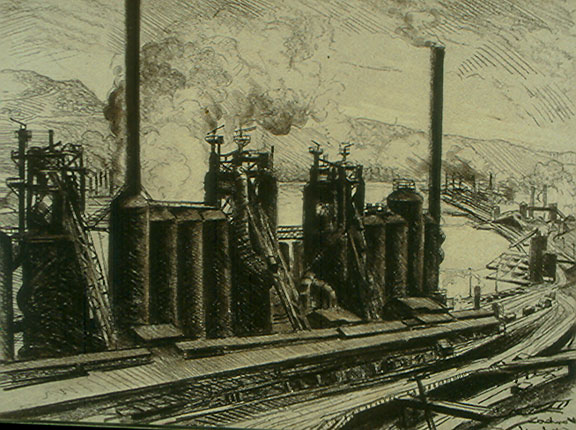

Maxo Vanka: New York in 1936

Maxo Vanka: In the cinema
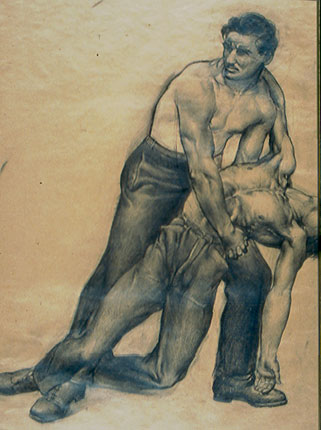
Maxo Vanka: Wounded friend

The Gift of Symphaty; The art of Maxo Vanka, monograph
David Byrne (member of rock group "Talking Heads", New York): ...The church is Croatian and the murals, by Maxo Vanka, are spectacular - the Diego Rivera of Pittsburgh, I would say. The murals were done during eight weeks in 1937, and they cover the interior of the church. Of course there is the Virgin holding the child, but below her, for example, on each side of what is now the altar, are Croatian people, on the left from the Old World, and on the right from the New. A steel foundry can be seen belching smoke behind them. But more amazing are the political murals that echo the crucifixion. Widows mourn over a soldier in a coffin containing a bleeding corpse; crosses cover the hillside behind them. Another wall depicts a corrupt justice in a gas mask holding scales on which the gold outweighs the bread. Clearly World War II had a big effect on Maxo. The Virgin, on the verge of being bayoneted herself, separates two soldiers. 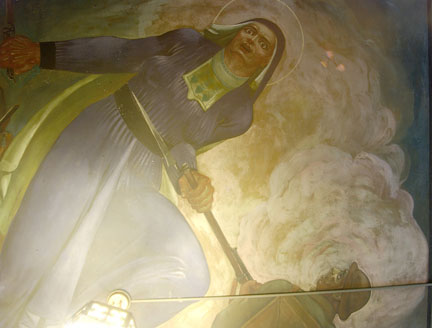 Maxo Vanka mural. Photo by David Byrne. On another mural an oligarch done as Death reads the stock reports while being served a chicken dinner by two black servants. One more: Jesus is stabbed, a second crucifixion. 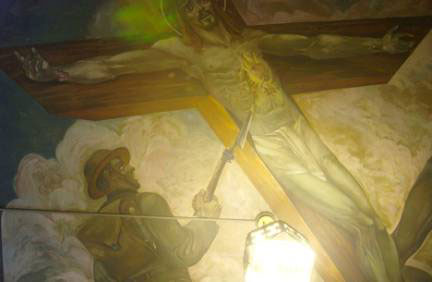 Maxo Vanka mural. Photo by David Byrne. These are badly in need of renovation; probably years of coal dust have darkened them. But one can hope that these amazing things will survive and be cleaned soon. |
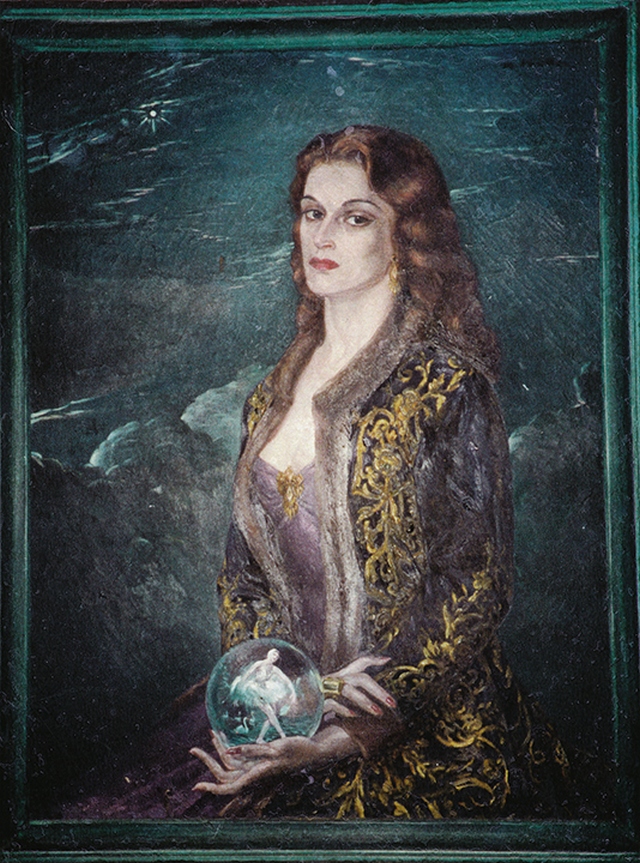
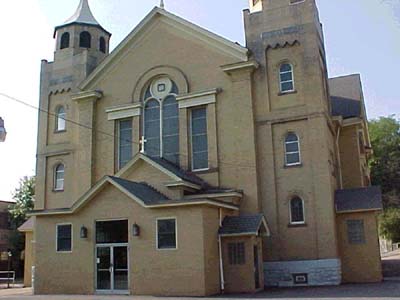
| St. Nicholas was established as a Croatian parish in 1900. The origin of the parish can be traced to the influx of Croatian immigrants to the area to work in local industries in the late nineteenth century... Peggy Vanka Brasko: It was well known that my father [Maxo Vanka] worked at painting the murals at a furious pace. He usually worked between 16 to 18 hours daily through the entire week. He worked without a watch so as not to be influenced by the time of day. ... After Vanka's death in 1963, a bird sanctuary was established in his honor at the Washington Crossing Nature Education Center.  Peggy Vanka Brasko: ...I most love the picture of him with "Prepelica" the little sparrow [quail] that he nursed back to health after he found it with a broken wing. It became a constant companion as he painted the murals. It tells something about his special intuitive touch which he called "the gift of sympathy". I am so much my father's kid! (and mother's too!) With much love to all of you, Peg The Murals at St. Nicholas Parish: ...Today they stand as a moving tribute to the people of Croatia, the Croatian immigrant and all immigrants to the United States. They are among the most striking and provocative murals found anywhere in the world. Maxo Vanka's twenty murals, combined with a more contemporary and complimentary mural by J I Knezevich, form a unique church artwork that combines secular and ecclesiastical images with startling interpretations of 20th century historic events.
You can support the work to preserve the murals through the Society to Preserve the Millvale Murals of Maxo Vanka. Please write for more information to: The Society to Preserve the Millvale Murals of Maxo Vanka c/o Diane Novosel Chairperson 151 Stone Gate Drive Leechburg PA 15656-7228 Personal and group tours of the murals can be arranged by calling:
|
important film project dedicated to Maxo Vanka
| Vanka (The Outcast) - production Formulafilm, coproduction with Screenwriter: Hrvoje Hitrec Director. Mladen Juran Producer: Boris Dmitrović Logline: Croatian painter Maximilian Vanka arrives in Through the intervention of the writer Louis Adamic, Vanka receives work that will make him famous in Fr. Žagar discovers that he is involved with a very mysterious man. In a book by Louis Adamic, The Cradle of Life, a work of "fiction," he reads a description of Maximilian Vanka's life, for whom it was believed back in A peripheral artistic and metaphysical experience, testimony to the deep interior condition and a personal drama echo in the heart of the new civilization. St. Nicholas Croatian Catholic Church in Millvale is listed as part of the national heritage of the |
DIRECTOR'S CONCEPTION"To willingly give your life for everything, to be burned at the stake, to be crucified, only can a strong person do that." (Dostoyevsky: Winter Notes) With their sheer monumentality of composition and intensity of feelings Vanka's murals at the St. Nicholas Catholic Church in Millvale, Pittsburgh – Pennsylvania, suffice to place among the greatest muralists of the twentieth century, the most striking and provocative murals to be found anywhere in the world. Painted by Vanka (1937 – 1941), a pacifist who immigrated to the U.S. from Croatia, "the best church murals in America" are striking blend of traditional religious (holy) images of Giotto and Da Vinci in that they were derived from the artist's own life experience: "Proletarian break-off with pall ecclesiastical tradition". The triumphant heavenly skies celebrate by contrast to the imagery of suffering, war and betrayal, the bright promise of Christian redemption. Catholics, Jews, Protestants, people at no definite religion, begane to come to the little church, to ask the happy, proud, bustling Father to let them see the paintings of Vanka's testament. Unique church artwork that combines secular and ecclesiastical images with startling interpretations of 20th century (even today!) historic events. A moving tribute to all immigrants to the U.S. Vanka, a painter whose art and life defy easy interpretation and classification, might strike one as the embodiment of such an enigma. There are complexities that points to the depths of human suffering, yet there are also extemporaneons flights into sweat mellowness. In New York people gased at him; many smiled to him; others paused to talk with him. Jews asked him was he a Jew; others, was the French or what was he. An actor? An artist? A Greek Orthodox priest? Having such a special biography in front of me, I drafted an idea that is both simple and self-evident: from its premise to its climactic counterpoint - the strong dividing line between two separate fates from two different worlds (the old world and the new) - Pittsburgh's fiery, molten steel and an especially subtle sensibility which is finally given full freedom, reaching its eternal dimensions, to express a mundane personal (universal) drama, and therefore rising to heaven. This is not a typical biographical film but rather a film about the fascinating secret of art and the artist combining both heavenly and demonic dimensions which comes from and goes nowhere, all of which is always and in its end - the outcast - , outside the world even though it passionately participates in it. Vanka's status as an offspring of the Austrian nobility allows him to have intriguing experiences though this is offset by heavy feelings of abondonment, being meteorically thrown into a world where he cannot conform. This is the source of his bitter humor, but also his capability of paranormal goodness, and even his similarity to a saint, St. Francis of Assisi. In Los Angeles, a man made him a proposition to start a new religion, "because you have the personality for a religious leader," and spoke of being willing to guarantee him a huge annual sum in profits therefrom...To Maxo's amusement, urchin's shouted "Whiskers!" and ran. The idea starts with the question: How much does the earthly path of an artist-purist compares to the biography of a saint? There are a series of dramatic situations which develop into internal and external conflicts as this path followed to its end (epilogue): THE UNWANTED CHILD – A DULL INDIFFERENCE TO EVIL - DORA MAMMA IS MORE A MOTHER THAN REAL MOTHER - THE FIRST SELF-PORTRAIT (like Christ, St. Sebastian, St. Francis?) - A PARANORMAL RELATIONSHIP "OUTSIDE OF THINGS" WITH BIRDS AND BUTTERFLIES – HIS MOTHER'S SPIRITUALITY: ALL MOTHERS IN THE FRESCOES ARE DORA MAMMA – THE WORKER AS CHRIST ON THE CROSS – THE APPEARANCE OF THE GHOST (the dual phenomenon in Dostoyevsky's "The Double" (?)...with constant fear, he transfers his fantasies to his other and intensely shames and hates him. Something has risen up from deep in the souls and begins to speak the darkest protest." Maybe, but... – THAT GHOST BECOMES THE MEDIA EVENT WITH WHICH ADAMIC PROMOTES VANKA! - WAR IN EUROPE - THE TWILIGHT OF VANKA'S ORIGINS, THE SEED OF LIFE - THE SENSELESS MURDER OF LOUIS ADAMIC - AN ACCUSATION AGAINST MANKIND... And at the end, the end of the path, the end of the frescoes: St Francis flies up, with his arms outstretched, together with the birds - up towards the arhed ceiling where the "transcendental vision" is (Christ's descent into hell and his ascent into heaven, where Dora mamma is, the Sorrowful Mother in earthly life is now the Mother of God, Queen of Heaven in eternal life. Her message? "After death there is Life, and here is the Way-My Son." The last fresco of the crucified peasant woman "Mati (Mother)" 1941 with Vanka's dedication "to Louis Adamic." Vanka swims in the open sea, surrenders and drowns. Under the water, the body is carried by the currents - his arms outstretched as if he is flying. In the final scene, Vanka will swim to an imaginary island, where his parrot Muri is waiting for him. Many thanks to Mr. Mladen Juran, Zagreb, for sending us the above logline and conception. |
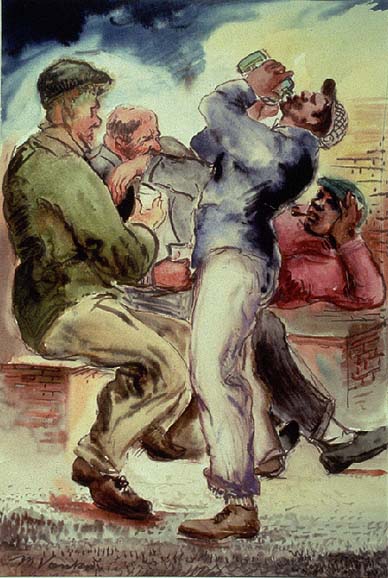
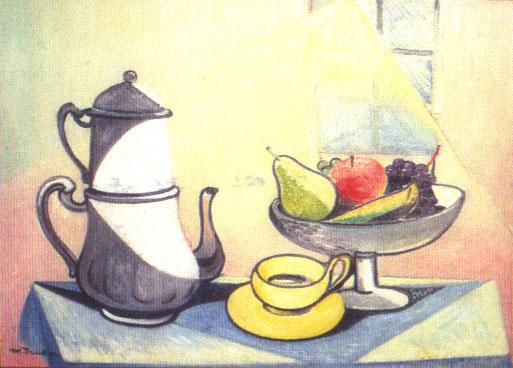
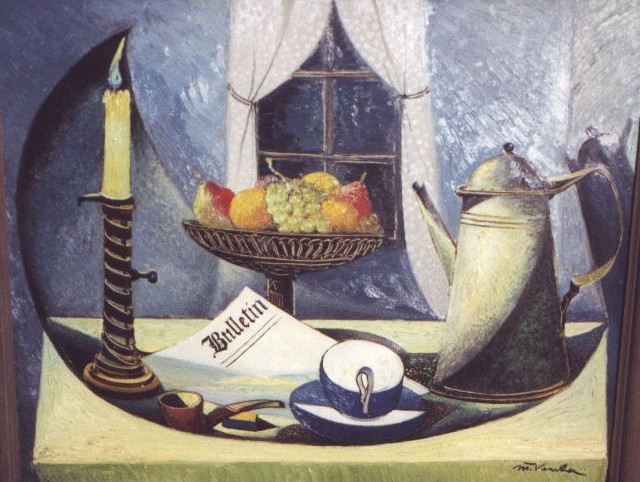
Maxo Vanka: Winter afternoon
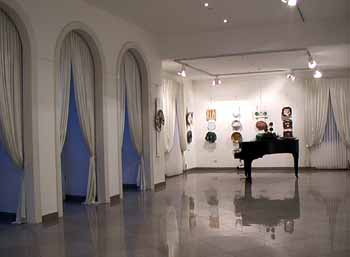
The Memorial Collection of Maximilian Vanka in Korcula, on the island of Korcula, Croatia
The Memorial Collection of Maksimilijan Vanka, KorčulaAddress: Put sv. Nikole bb, 20260 Korčula, Croatia The collection of Maksimilijan Vanka, along with his house and studio in Korčula, were donated to the Academy in 1964 by his widow, Margaret Stettin Vanka. Vanka's villa was adapted for the presentation of the Memorial Collection, and its was opened to the public in 1969. Maksimilijan Vanka (Zagreb, 11 October 1889-Puerto Vallorta, Mexico, 2 February 1963) is an important name in modern Croatian painting. He was educated in Zagreb and Brussels. He was a corresponding member of the Academy of Sciences and Arts, and a professor at the Academy of Fine Arts in Zagreb until his departure to the United States in 1936. The collection of Maksimilijan Vanka in Korčula presents a cross-section of his work from the 1920s until his death. It consists of dozens of paintings, watercolors, pastels and drawings, showing Vanka's art from the monumentalism of New Reality, through the influence of Van Gogh and expressionism, to later constructivist tendencies. The newly adapted building which houses the collection was opened in 1998. |

Maxo Vanka: Lady in Blue, detail, Michener Art Museum
Maxo Vanka was one of costume designers for a famous Croatian-American ballerina Mia Slavenska.
Please, go to the next page below.
St. Nicholas Croatian Catholic Church, Pittsburgh, USA


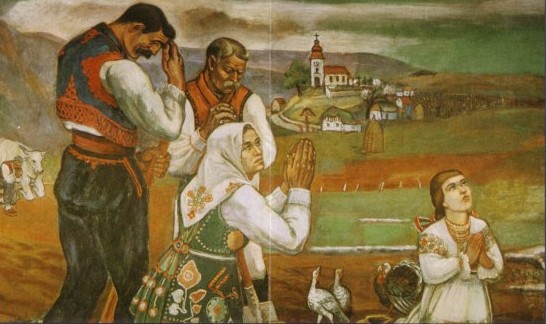
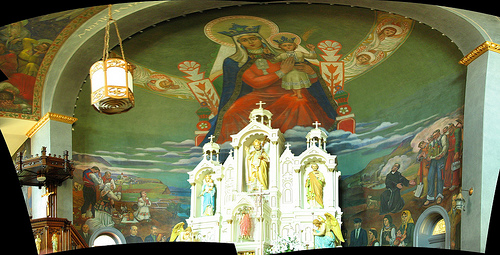
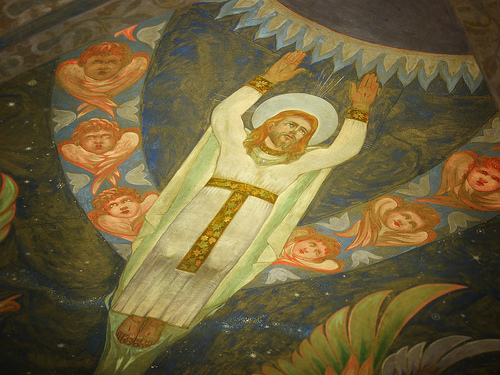
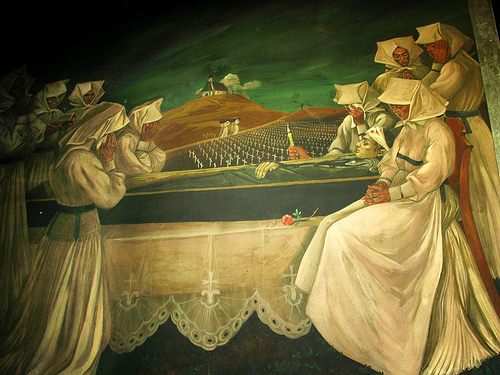
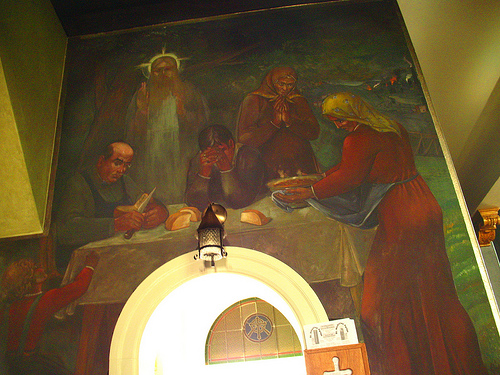


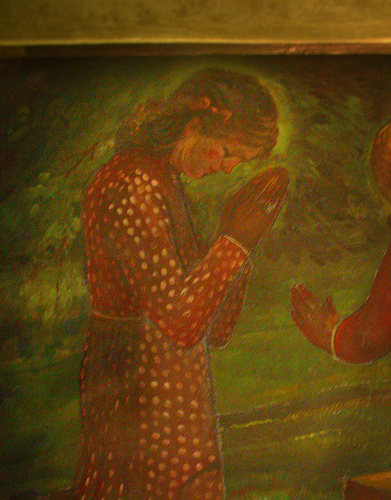
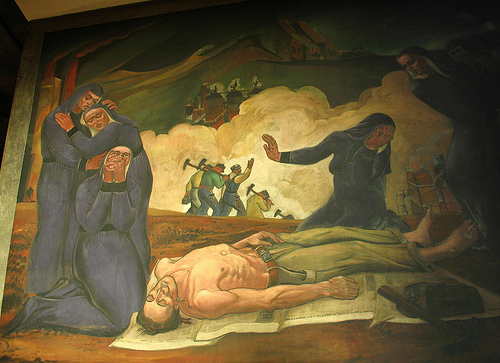
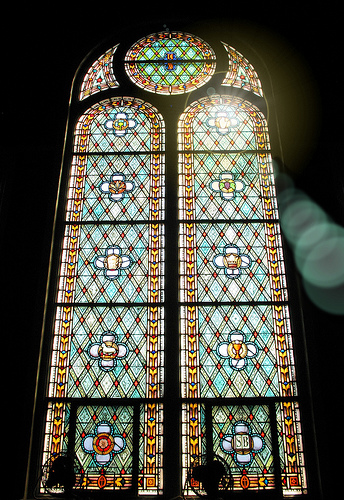
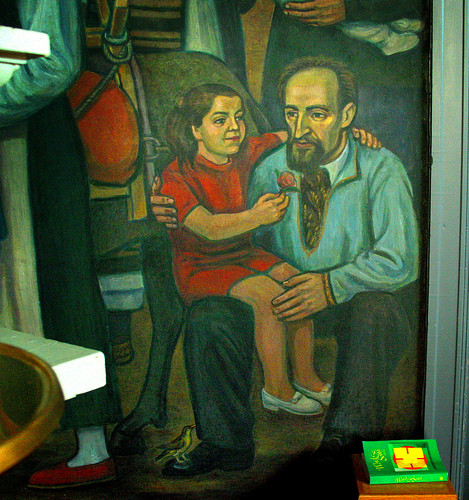
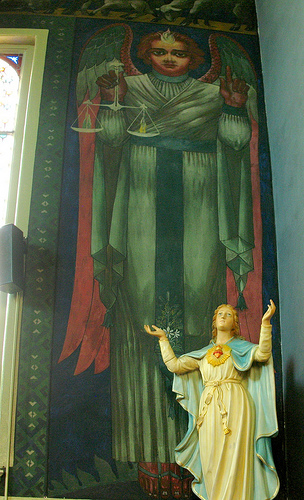
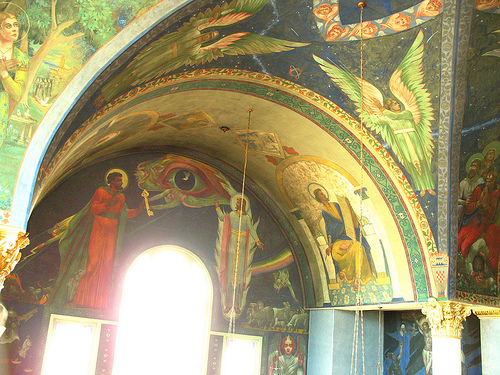

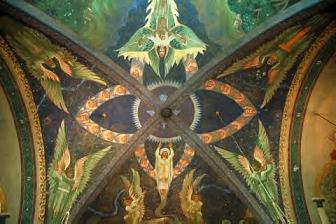
Formated for CROWN by prof.dr. Darko Žubrinić
Distributed by www.Croatia.org . This message is intended for Croatian Associations/Institutions and their Friends in Croatia and in the World. The opinions/articles expressed on this list do not reflect personal opinions of the moderator. If the reader of this message is not the intended recipient, please delete or destroy all copies of this communication and please, let us know!

